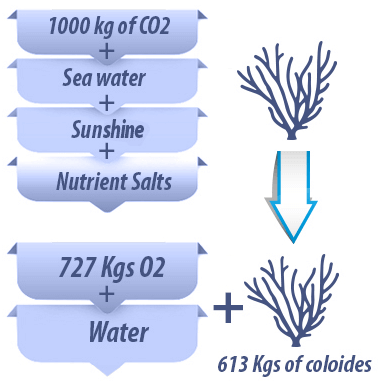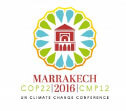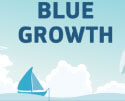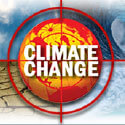AREAS OF INTERVENTION

The objectives of adaptation and mitigation to the changes are based on three main axes consisting of global priority actions aimed at bringing to light many projects contributing to the transformation of the fisheries sector into a field of sustainable economic activity with high added value creation.
Promoting scientific research and knowledge will support the emergence of integrated coastal observation systems and facilitate their integration at the global level, with particular emphasis on the user-observer concept.
In the current context of degradation of fish stocks, the objective is to produce more by fishing less while protecting more. It will therefore be a matter of encouraging actions for sustainable fisheries and for valorization, from the ecosystem to the consumer.
To sustain the growth of aquaculture in the long term, it will be necessary to promote the emergence of an aquaculture based on respectful and ecosystem-friendly foundations, based in particular on seaweed farming.

Solutions consisting of integrated and interconnected actions in an Ecosystem Approach to Fisheries


COASTAL OBSERVATION

For an observed and protected space, with oceanographic and biological observation system with sanitary alerts in real-time.

Objectives :
OCEANOGRAPHIC AND BIOLOGICAL OBSERVATION
This will be achieved by strengthening the technological and human capacities for ocean observing in the African regions as a matter of priority, by acquiring and installing continuous observation equipment, as well as by knowledge transfer, training and the exchange of expertise for the maintenance and operation of these systems.
The acquisition of oceanographic research vessels, scientific observing equipment such as oceanographic and meteorological buoys, and many other types of observations such as satellites, biological markings, etc., should be encouraged for coastal marine ecosystems monitoring.
Wide range of technologies available:
- Agro Floats
- Research vessels
- Deepwater Mooring
- Ocean Glider
- AUVs
- Mooring Network
- High Frequency Radars
- Animal Tagging and Tracking
- Wireless Sensor Network
- Satellite Remote Sensing
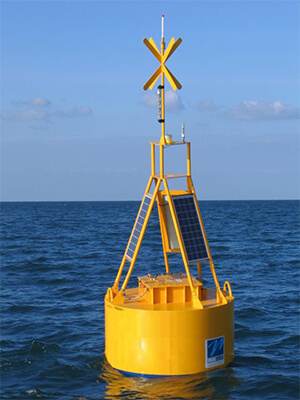

USER - OBSERVER
Observing oceans and marine ecosystems is a particularly costly operation in terms of financial and human resources.
On the basis of the fact that the first observers of the marine environment are the professionals of the sea themselves, because they are there permanently, it seems appropriate to use them in the collection of information.
To complement and support scientific observing systems, which are very costly to implement and maintain, the Blue Belt initiative supports the concept of "User-Observer", which would encourage the use of fishermen and the other professionals of the sea for the measurement and the systematic transmission of a certain number of basic parameters.
These measures, which should not require scientific know-how, could be carried out using existing or future meteorological, oceanographic or biological sensors (Innovation), which would allow systematic access to a much larger amount of data.
MONITORING, RISK ALERT AND MANAGEMENT SYSTEM
With marine pollution, the effects of climate change on the oceans lead in many cases to the eutrophication of sensitive areas, the increase in virulence of pathogens and to the endemic or emerging toxic microalgal blooms. These phenomena can lead to massive deaths of fish and shellfish and impact on fisheries and aquaculture activities, while constituting major health risks for the consumer of fishery products.
To better understand these phenomena and to be able to cope with them, the aim will be to promote the establishment of environmental and health surveillance and warning systems and risk management plans based on :
FIELDS OF APPLICATION AND USE :
Fisheries - Development - energy - ecotourism - gas and oil - marine preservation - aquaculture - climate - habitat - predator

SUSTAINABLE FISHERIES

FOR A COORDINATED AND PLANNED ADAPTATION POLICY :

Objectives :
In front of the challenges of the combined effects of overexploitation, degradation of marine habitats and climate change, there is an urgent need to promote concrete actions for sustainable fisheries, resilience of oceans and climate.
For this purpose, three complementary directions must be taken in parallel:
TESTED SOLUTIONS FOR EACH ACTION
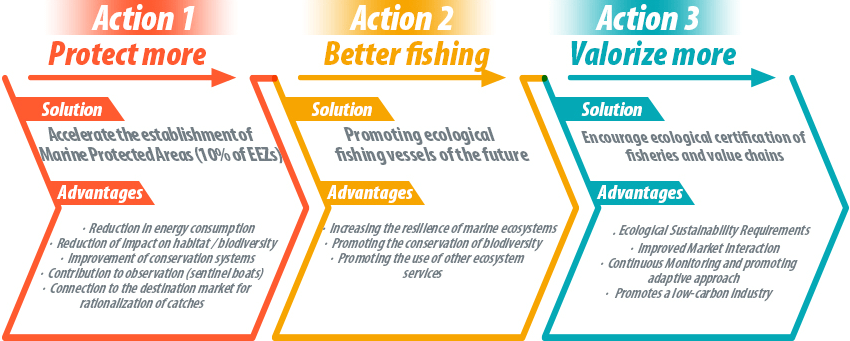
PROTECTING BETTER AND EFFECTIVELY
The resilience of the oceans has become a major challenge, and to this end, Marine Protected Areas are one of the flagship solutions most defended by the scientific community. Some advocate the need to protect up to 30% of the surface of the sea to actually allow the resilience of the oceans.
Our ability to implement these very ambitious objectives will depend on our ability to explain their ecological and economic value to the people who depend on the ocean economy in general.
Their ecological and economic effects are still insufficiently studied and further studies and scientific research on these issues are needed. This step is essential to provide sufficient scientific evidence to fisheries managers and encourage all coastal countries to accelerate the process of establishing marine protected areas and to comply, as a first step, with the Aichi target for Biodiversity to create a network of protected areas of 10% of the sea surface.

fishing LESS AND AT THE SLIGHTEST IMPACT
In order to sustainably exploit fish stocks, protect biodiversity of marine fauna and the marine ecosystem as a whole, it is imperative to reduce fisheries pressure. This imperative is even more urgent in the context of climate change.
Numerous international initiatives, guidelines or international agreements such as the Code of Conduct for Responsible Fisheries, the Ecosystem Approach of Fisheries and more recently the Agreement on Port State Measures , are equally important instruments for accompanying coastal and fisheries states to implement their fisheries and aquaculture governance strategy in a sustainable manner.
This process can not be completed without the economic levers and in particular the production units of fishermen who have hitherto led a race for technology and modernization of fisheries techniques to fish more and further without giving sufficient importance to the economic and ecological sobriety of their unit of production. In this sense, rather than helping fishermen to fish more and further for the socio-economic survival of overdue fisheries due to declining stocks, the fisherman should be stimulated and encouraged to fish less, with the lowest ecological footprint.
It will therefore be necessary to encourage the transformation of fisheries fleets with new boats of the future, which are more "economically and ecologically sober", designed according to new specifications, including energy efficiency, reduction of the footprint conservation of fishery products.
VALUING MORE WITH GROWING DEMAND
In the context of a scarcity of resources, the valorisation of the fishery product is more than desired, it is an obligation. The OECD considers the processing industry to be one of the economic activities with a very high potential for growth in future years.
According to the FAO, fish is the most traded food product in the world. It is therefore urgent to encourage the development of industries processing fish products locally, as well as to develop the capacities of the countries of the South in R & D and innovation in valorisation.
Improved conservation and upgrading of fish products would increase the net income of the fisheries sector, which could contribute to reducing fisheries pressure on fish stocks.
It will also be a matter of encouraging ecological certification processes at the level of all sectors, from fish to consumers, insofar as they are generally processes that promote the sustainability of the resource and their valorisation.

SUSTAINABLE AQUACULTURE

Aquaculture has developed considerably (90 M tons / year) in recent years, but often depends on the sustainability of ecosystems (health problems or over-exploitation of forage species for food).
The objective is to promote sustainable practices or contribute to the mitigation of climate change. Algaculture and multi-trophic aquaculture should be encouraged through research and institutional support

Objectives :
Given the critical state of many fish stocks and the stagnation of global capture fishery production, aquaculture, which is the fastest growing sector, has taken a leading role in global food supply. More than one in two fish consumed by humans comes from aquaculture.
Aquaculture development is expected to continue and accelerate with the high demand for marine food products, but there is an urgent need to encourage sustainable aquaculture with the least direct impact and Indirect impacts on the oceans.
In this sense, the objective of the Blue Belt is to contribute to and promote the emergence of sustainable aquaculture, particularly seaweed farming.
THE MACROALGAE IN OFFSHORE
The aim is to encourage and promote the development of offshore algae farming, which has a strong environmental interest and economic potential.
With its ability to absorb nitrogen and phosphorus, as well as the binding power of heavy metals, macroalgae can contribute to the depollution and rehabilitation of risky maritime spaces (urban areas , Port, ...).
The production of sufficient macro-algae biomasses, especially in offshore areas, could allow the emergence of new industrial activities such as agro-food, pharmaceutical, cosmetic industries, etc.), while being able to contribute, depending on their end use, in order to attenuate through their power of sequestration of Co2
THE MICRO ALGAE
The cultivation of microalgae has a very important development potential. The aim is to encourage their development in the right zones, given that in recent years, there have been many hopes of demonstrating their potential as a basis for various industries and markets
With their protein and lipid richness especially Omega 3 (DHA & EPA), microalgae are currently used as a complement to flour and fish oil in fish foods
The production of micro-algae could then contribute to the reduction of fisheries pressure on the pelagic stocks currently destined for the production of fishmeal and to the emergence and development of new so-called clean industries
MULTI-TROPHICAL AQUACULTURE
The development and intensification of aquaculture has always generated major environmental concerns. Health and pollution risks are real. It is in this context that the development of Integrated Multi-trophic Aquaculture is promoted, based on the principle of circular economy, where the waste of one compartment constitutes the food of another, thus producing The least amount of waste possible and contributing to the sustainable development of Aquaculture

Some Key Data

Some key figures :

Principle :
